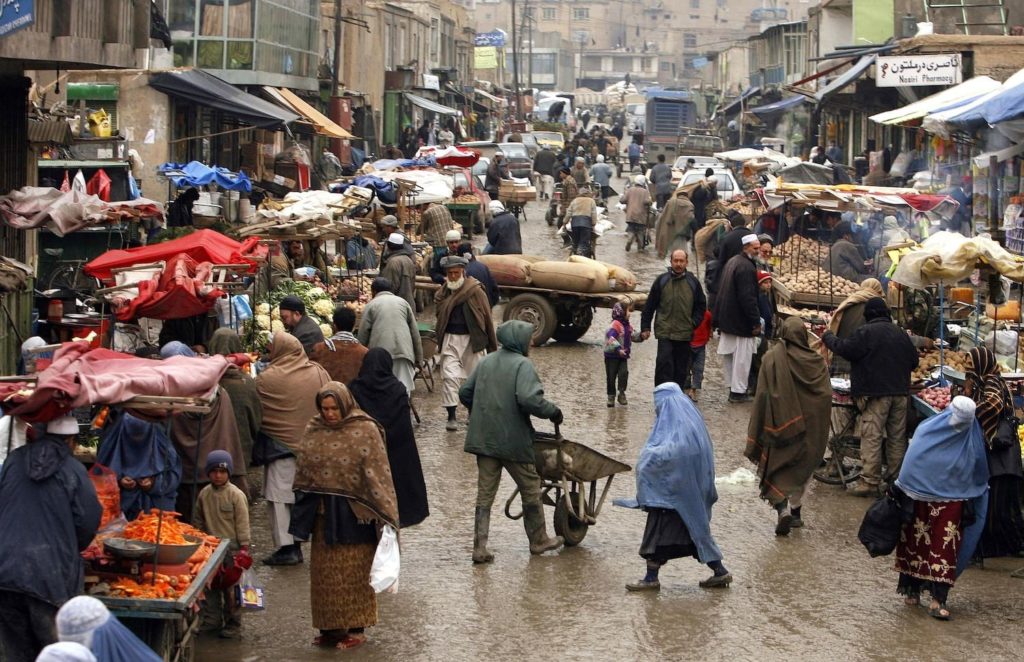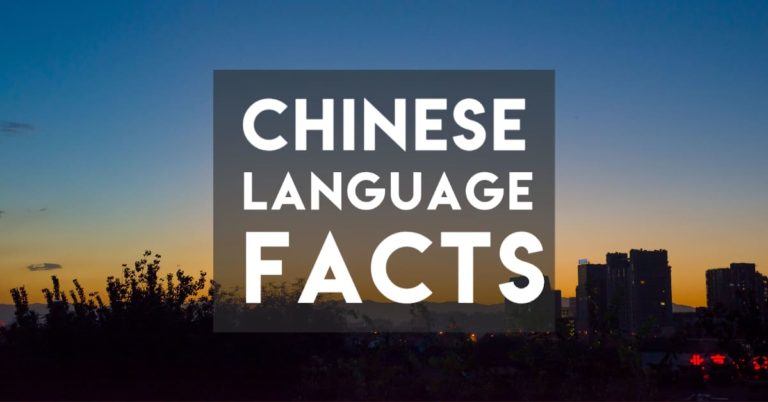Afghan vs Iranian Persian: Major Similarities and Differences
This is an overview of Persian as it’s spoken in Iran vs Persian as it’s spoken in Afghanistan, which is often called Dari, considering the similarities and differences of pronunciation, vocabulary, and grammar.
“Persian” is the name that unites the two languages. Sometimes people call Persian in Iran “Farsi”, but it’s not common practise.
Persian as it’s spoken in Afghanistan, on the other hand, is often referred to as Dari. It’s mutually intelligible with Persian as it’s spoken in Iran. Afghan and Iranian Persian are mutually intelligible, have mostly the same grammar, and the formal forms are almost identical — other than regional accents.
But below, I’ll look at a few interesting differences between Iranian and Afghan Persian.

Contents
Naming Conventions — Persian, Farsi, or Dari?
There’s often a lot of contention about what to call the language.
In English, we generally refer to the languages as Persian. But we might get more specific and say Dari to refer to Persian as it’s spoken in Afghanistan.
In Iran, Iranians refer to their language (which in English is referred to as “Persian”) as “Farsi”. In Afghanistan, it depends on who you ask. Officially, the language is called Dari, but the reasons for this are said to be political. Persian has been called Dari in Afghanistan since 1958.
Many Persian speakers in Afghanistan prefer to use the name “Farsi”. They say the term Dari has been forced on them by the dominant Pashtun ethnic group as an attempt to distance Afghans from their cultural, linguistic, and historical ties to the Persian-speaking world, which includes Iran and Tajikistan.
The difference between Afghan and Iranian Persian could be likened to the difference between British and American English. When two newscasters speak there’s little to distinguish them. But if someone from the countryside of either the UK or America met each other, they’d find a lot of differences in pronunciation, slang, and even shortcuts in spoken grammar.
Thus there is no “correct” pronunciation of Persian. Some Iranians think of Afghans as speaking Iran the way it was spoken 50 years ago — before the Soviet invasion in 1979 that divided the two cultures.
As I speak Iranian (Tehrani) Persian natively and have become exposed to Dari through teachers, film, and news radio, I thought I’d give a brief summary of the differences between the two forms of the language.
Become a Discoverer
Like this article on Persian languages? Join Discover Discomfort on our mission to bring people closer through building shared understanding between cultures.
Afghan Persian / Dari vs Iranian Persian — An Overview
Here’s a quick overview of the differences between Dari and Iranian Persian.
- Vocabulary: Iranian Persian has a lot of borrowed vocabulary from French. Afghan Persian (Dari) has a lot of borrowed vocabulary from English. Both languages have a mixture of Farsi and Arabic words, often for the same things, but sometimes they use different Arabic words.
- Grammar: The grammar is largely identical in formal Dari and Iranian Persian. In spoken form, Dari and Farsi modify conjugation and pronunciation in some ways, and there is a degree of overlap in how they do it.
- Pronunciation: Dari and Farsi have different accents. Dari retains the Arabic “w” pronunciation of waaw/vaav (و), whereas Iranian Persian pronounces it “v”. Dari more often pronounces qaaf (ق) as a hard “q”, whereas Iranian Persian will simplify it to the “gh” of ghayn (غ). Dari also prefers not to have adjacent consonants.
If you’re interested in learning Dari, we also have a small section on Dari learning resources at the bottom.

Afghan vs Iranian Persian Vocabulary — The Biggest Differences
There’s no bigger difference between Iranian and Afghan Persian (Dari) than in vocabulary.
To an educated native Persian speaker from Iran or Afghanistan, the two forms of Persian are almost entirely mutually intelligible (and that “almost” vanishes with a small amount of effort).
But the differences range from everyday words to complicated ones used in government and business, and cover verbs, adjectives, and nouns.
There’s no over-arching rule about how the vocabularies are different. I’ve heard some claim that Afghani Persian has more Arabic words, and some claim that Afghani Persian is “purer” than Persian as it’s spoken in Iran. Both claims can be supported by some examples, and refuted by others.
The best way to summarise the difference is that the vocabularies of Persian evolved separately in Afgahnistan in Iran, and now they do not overlap 100%.
But from my observation (and the opinions of those who speak one language, and understand the other)
- Afghan Persian tends to have more imported words from English than Iranian Persian.
- Persian from both Afghanistan and Iran both tend to use many Arabic words, but sometimes they can be different Arabic words.
Some examples of words that are different (or used differently) in the varieties of Persian include:
| English | Afghan Persian / Dari | Iranian Persian |
|---|---|---|
| To eat a meal | نان خوردن (naan khordan) lit. “to eat bread” | غذا خوردن (ghazaa khordan) uses the Arabic word for “lunch” |
| To speak | گپ زدن (gap zadan) ancient Farsi word | حرف زدن (harf zadan) uses the Arabic word for a “letter” |
| Bicycle | بایسیکل (baisikel) loan-word from English | دوچرخه (do charkheh) lit. “two wheeled thing” |
| Thank you | تشكر (tashakor) Arabic word, used in Iran as a verb (for “to thank”) | مرسی (mersi) loan-word from French |
| Hospital | شفاخانه shafaa khaaneh “Healing house” | بیمارستان (bimaar-estaan) “Place of patients” |
| OK | خوب، خو (khob, kho) Means “good”. “kho” is the colloquial variant | باشه (baasheh) Means “let it be”. |
| Car | موتور (motor) This means “engine” in Farsi | ماشین (maashin) Also means “machine”. |
| Airport | میدان هوائی (maydaan-e havaa’i) “Air field” | فرودگاه (furud-gaah) “Landing place” |
| In/at | در (dar) Standard Persian; also used in Iran (but more formal) | تو (to) Colloquial, but very common |
| To use | استعمال کردن (este’maal kardan) This root is used in modern spoken Arabic. In Iran this means “to employ” | استفاده کردن (estefaadeh kardan) |
| Son | بچه (bachah) In Iran this word (bacheh) means “child” | پسر (pesar) |
| Meaning (e.g. of a word) | مطلب (matlab) In Iran this means content, or subject. | معنی (ma’ni) From a more common Arabic root |
Obviously, there are many more differences. These are just the ones that have come up most often for me in my studies.

Afghan Dari vs Iranian Persian Grammar
Overall, formal grammar is the same in Afghan and Iranian Persian.
The main difference is that in the present continuous tense in Dari, the particle daaram (دارم) is not used. It doesn’t carry any specific meaning in Persian except to emphasise the present continuous (rather than the simple present or future).
In colloquial Dari, there are simplifications made to grammar that are similar in style to those in Iranian Persian, but different in substance.
For example, in colloquial Dari, the first-person subject pronoun “I”, man (من), is pronounced ma, omitting the final -n. This doesn’t happen in Iran.
Similarly, in the second-person (he/she) singular conjugation, both Iranians and Afghans simplify the pronunciation, but in slightly different ways — Iranian Persian speakers changes the -ad ending to -eh, and Afghan persian pseakers changes it to -ah. (In Perso-Arabic script, it’s written the same way.)
See the following table for examples.
| English | Standard Persian | Colloquial Iranian Persian | Colloquial Dari |
| he/she does | ایشان می کند ishan mikonad | او می کنه u mikoneh | او می کنه u mekonah |
| he/she says | ایشان می گوید ishan miguyad | او می گه u migeh | او می گه u megah |
On the other hand, both Iranian and Afghan Persian speakers simplify the second-person plural (“you people”) conjugation of verbs the same way. For example “you (pl) do” is written mikonid (می کنید) and pronounced mikonin in both Dari and Iranian Persian.
In colloquial Dari / Afghan Persian people add a -gak or -k ending to make something small, displaying affection. For example dokhtarak means “small daughter” but really “beloved daughter”, and bachagak means “small/beloved son”. In each case the daughter/son isn’t necessarily small, and may be an adult.
Afghan Dari vs Iranian Persian Pronunciation
The most obvious difference between Afghan Persian and Iranian Persian is in pronunciation.
To an Iranian Persian speaker, Afghanis sound like they’re speaking with an Arabic-speaker’s accent. This happens because of both different pronunciation of some words, as well as different “rhythm”.
Broadly, the Tehrani Persian accent has a more sing-song quality to it than big-city Dari accents, which are more staccato.
Fewer Adjacent Consonants in Afghani Persian / Dari
The staccato sound comes from even less willingness in Afghan Persian to have adjacent consonants than in Iranian Persian.
In Farsi, words never start with two adjacent consonants. It’s why Persians can’t say “spaghetti” without it sounding like “espaguetti”. (And forget about Persians ever saying “squirrel” successfully). But in Dari, this can happen more often.
A few examples of Dari consonant separation are:
- فکر (to think): pronounced fekr in Iranian Persian, and fakkar in Afghan Persian
- صحبت کردن (to speak): pronounced sohbat kardan in Iranian Persian, and sometimes as sahabat kardan in Afghan Persian
Pronunciation of Letters in Dari
The major pronunciation differences between Iranian and Afghan Persian are:
- The letter qaff (ق): Afghans pronounce this similar to Arabic, as a hard “q” sound from the back of the throat. In most of Iran it’s pronounced as they pronounce the letter ghayn (غ), like a French r as in rouge.
- Short a and long aa vowels: In Tehrani and Shirazi Persian, the long aa (alef, ا) is pronounced with a u, and the short a (not written) is often changed to an e. For example, to say “I don’t know” in Persian (نمیدانم), a Tehrani/Shirazi would say nemidoonam, whereas an Afghan would say namidaanam, and the word for “one” (یک) is pronounced yek in Iran but yak in Afghanistan.
- The letter waaw/vaav (و): In Afghan Persian the waaw/vaav consonant is pronounced as a w sound, as in Arabic, whereas in Iran it is more commonly pronounced as a vowel v. For example, the word for “time” (وقت) is pronounced wakht in Afghanistan but vakht in most of Iran.
Colloquial modifications to Afghan vs Iranian Persian
Afghan Persian speakers also make different colloquial modifications to words than Iranians do.
- Afghan Persian speakers often drop a final consonant in everyday speech. For example “here” (این جاه) is pronounced in jaah in Iran, but i jaah in Dari, and “I/me” (من) is pronounced man in Iranian Persian, but ma in Afghan Persian.
- Afghan Persian speakers often prefer an -om ending to first-person present-tense verbs, whereas Iranians prefer an -am (see examples below)
Farsi and Dari speakers simplify verbs in similar ways, but pronounce them differently, particularly in the first person. For example:
| English | فارسی/دری | Standard Persian | Afghan pronunciation | Iranian pronunciation |
|---|---|---|---|---|
| I want | من می خواهم | man mikhaaham | ma mikhaayom | man mikhaam |
| I come/am coming | من می آیم | man miyaayam | ma miyom | man miyom |
| I go | من می روم | man miravam | ma mirom | man miram |
| I say | ایشان میگوید | man miguyam | ma migom | man migam |
But Afghans and Iranians sometimes both make the same simplifications to pronunciation. Some of these are
- The letter qaff (ق) is sometimes pronounced as “kh” instead of “q”: In some words, like “time” (وقت) or “point” (نقطه), the same modification is made to the way qaff is pronounced in both Afghanistan and Iran.
- No other Arabic letters retain their distinct pronunciation in either region. Only qaff (ق) is pronounced differently in Afghan Persian. For example, the letters se (س), se se-nokhteh (ث), and saad (ص) are all pronounced with the same “s” sound.
Additional Vowels in Dari
One commenter (thank you!) pointed out that since Dari has retained older pronunciations of some letters, it has kept a broader range of vowel sounds. I’ve reproduced her comments below.
Firstly, Dari has retained the au and ai sounds:
- The word خو (colloquial word for “sleep”, خواب) is pronounced xau, rhyming with “cow” in English.
- Similarly, the word پيدا in پيدا کردن (“to find”) is pronounced paidaa as in, the first syllable of which rhyming with “pie” in English.
Secondly, Dari retains the i / e distinction that has collapsed in Farsi.
For example, the word شير can mean either “milk” or “lion”. In Iranian Persian, they’re both pronounced the same — as shir (rhyming with “sheer” in English). In Afghan Persian, only the first is pronounced this way, the second being pronounced as sher (like the singer Cher).
Similarly, the long ae vowel is present in the verbal prefix می. In Dari, this is normally pronounced me (like a long “mae”), and not mi as it is in Iranian Persian. See the section on grammar for a couple of examples.
How to Learn Dari — Dari Learning Resources
If you’re interested in learning Iranian Persian with a standard Tehrani accent/dialect, then there’s a whole page of resources there.
But there are far fewer resources for learning Dari, or Afghan Persian.
The best one we’ve found is Pimsleur.
Pimsleur is an audio-based course that you listen to and with which you interact. They start with simple greetings and move on to more and more complex phrases.
The prompts ask you to interact with them, assembling some phrases as you get more advanced.
You don’t get “fluent” with Pimsleur. But it does teach you a solid foundation of useful phrases, and gets you very acquainted with the pronunciation.
Try it out — I used to use it for quite a few languages as my first introduction and always really enjoyed how quickly I could pronounce things very well with it.
Try Pimsleur for Free
Try Pimsleur’s 7-day free trial — audio courses in dozens of languages.







wow, great post! very helpful. Thanks
Very concise and accurately explained.
Thanks Dana!
One major difference of pronunciation that should also be mentioned is that Dari has more vowel sounds than Farsi as it has retained older pronunciations of some vowels that have collapsed into a single pronunciation in Farsi. First Dari has retained the [au] and [ai] sounds. The word خو (colloquial word for sleep خواب) is pronounced [xau] (rhymes with English ‘cow’) and the word پيدا (as in پيدا کردن to find) is pronounced [paidaa] as in English ‘pie’ + daw. Second is in the i/e distinction. Dari has retained this distinction that has collapsed in Farsi. For example take the… Read more »
Hi Heather, really good point. Thank you.
Interesting article, however I must point out as a native “Dari” speaker, we say fekr and sohbat exactly the same way as Iranians do. Perhaps it may be a small minority that have such accents as is within Iran too, also the diverse vocabulary in “Dari” enables one to opt for either estefadah or estemal, both used frequently. Another difference worth mentioning is the use of “wa” as opposed to “ba” in certain cases of colloquial Dari, for instance Dari speakers often say “wardar”(lift/take) or “waaz”(open) rather than “bardar” or “baaz”.
Very helpful. Thank you!
What a meticulously researched, well-structured post! This was very gratifying to read as someone with a keen curiosity in the Persian language(s), thank you for putting this up.
If learning Dari and have a wealth of Farsi materials, should I learn written or spoken Farsi?
I’d suggest you find materials/teachers really focused on Dari.
Hello, Very nice to see someone finally took upon the task of explaining these differences. Consider including all vocabulary difference. It shouldn’t be too difficult if you are fluent in Dari or if Dari is your mother tongue. I am saying this because there are not many Dari dictionaries available and the few that I have encountered are not very good. This is while there are many very inclusive overall good Farsi dictionaries available. Also consider adding some maps. You could expand this website by adding Tajik language (just find someone or few people that is/are influent in Tajiki). That… Read more »